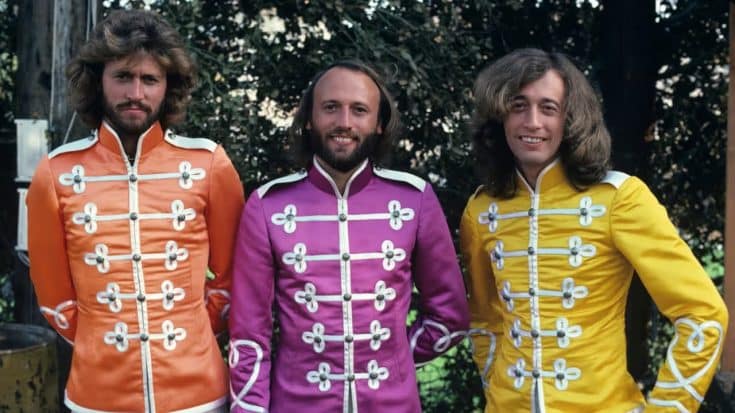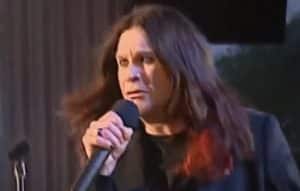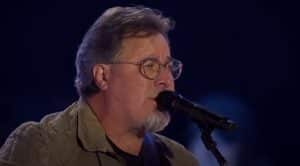The Story Of How “Stayin’ Alive” Became So Iconic

via Bee Gees Jam/ Youtube
Have you ever belted out “Stayin’ Alive” in the shower, on the dance floor, or maybe even while stuck in traffic? This song has transcended generations and become a global phenomenon.
The Bee Gees, already established artists, skyrocketed to disco royalty thanks in part to this unforgettable track. It wasn’t just catchy, it became synonymous with the entire Saturday Night Fever experience.
But where did this cultural touchstone come from? This article dives deep into the story behind “Stayin’ Alive”, exploring its inspiration and the unique process that brought it to life.
The Birth of a Disco Anthem
The Bee Gees’ timeless hit, “Stayin’ Alive”, wasn’t born from a fully fleshed-out movie concept. In fact, the song’s origins date back to the early development stages of Saturday Night Fever.
Robert Stigwood, the film’s soundtrack executive producer and future Bee Gees manager, approached the group to write music that captured the essence of disco fever.
With the movie still in its early stages, Stigwood only had a general theme – discomania – to guide the Bee Gees. Despite this lack of specifics, Barry, Robin, and Maurice Gibb took inspiration and channeled it into “Stayin’ Alive”.
The songwriting process itself was rather unconventional. The brothers wrote the song over a brief period while working on a staircase at a French studio! This unique location, Château d’Hérouville near Paris, was a popular recording spot for the Bee Gees, who, like many artists of the time, preferred to record in France for tax purposes.
The Meaning Behind “Stayin’ Alive”
The iconic title of “Stayin’ Alive” wasn’t originally intended for the song. RSO Records, the Bee Gees’ label, initially wanted the song to share the movie’s working title, “Saturday Night”. However, the brothers Gibb felt there were too many existing songs with “Saturday” in the title, and the album already featured another track called “Night Fever”.
This disagreement sparked a creative shift. Instead of changing the song’s title, Stigwood took the “Night Fever” element and expanded it to become the movie’s full title, Saturday Night Fever.
Intriguingly, the song’s lyrics themselves were inspired by something quite unexpected – Robin Gibb’s Concorde ticket. Words like “welcoming” and “breathing” found their way into the song, reflecting the experience of flying. However, the core message of “Stayin’ Alive” goes deeper than a catchy disco beat.
The Bee Gees themselves revealed that the song explores themes of resilience and survival, particularly in a tough urban environment. As Barry Gibb explained, it’s about the universal struggle against challenges and the triumph of overcoming them.
Bringing “Stayin’ Alive” to Life
The infectious rhythm and smooth vocals of “Stayin’ Alive” were meticulously crafted at Criteria Studios. Maurice Gibb laid the foundation with a bassline that mirrored the guitar riff, while Barry Gibb and Alan Kendall added their own guitar flourishes. Blue Weaver’s synthesizer work further enriched the soundscape.
Interestingly, Barry Gibb opted to sing the entire song in falsetto, with the exception of the line “life’s going nowhere, somebody help me”. This vocal choice added a signature touch to the track. A hurdle arose during recording when the group’s drummer, Dennis Bryon, had to leave due to his mother’s passing. The search for a replacement proved difficult, as qualified drummers were scarce in the area.
Thinking outside the box, the Bee Gees experimented with a drum machine, but the results weren’t quite what they envisioned. A stroke of inspiration came from their previously recorded song, “Night Fever”. They took two bars from the “Night Fever” drum track, looped it on a separate tape, and used it as the backbone for “Stayin’ Alive”.
In a playful twist, they credited the “drumming” to a fictitious Bernard Lupe, a humorous nod to real-life session drummer Bernard Purdie. Little did they know, “Bernard Lupe” would become a sought-after drummer in the music world!
An Unexpected Legacy
The enduring popularity of “Stayin’ Alive” extends far beyond the disco floor. The song has taken on a surprising yet significant role in the medical field. Researchers conducted a study to explore whether using “Stayin’ Alive” could help medical professionals perform CPR more effectively.
The song’s tempo is key here. “Stayin’ Alive” has a beat of approximately 104 beats per minute, which falls perfectly within the recommended range of 100 to 120 chest compressions per minute during CPR, as outlined by the British Heart Foundation.
The study’s results were compelling. Medical professionals who thought about “Stayin’ Alive” while performing CPR demonstrated a noticeable improvement in the quality of chest compressions.
This unexpected finding highlights the power of music and its potential to serve as a valuable tool in life-saving situations.
Stayin’ Alive Through Covers
The infectious energy of “Stayin’ Alive” has transcended the disco era, inspiring countless artists across various genres to put their own spin on the classic.
In 1995, dance group N-Trance took the song to new heights with their cover version. Their high-energy rendition, featuring rapping from Ricardo Da Force, became a massive hit in the UK, peaking at number two on the charts. For many, the song’s iconic opening line, “Get down with the fever on the dance floor,” is now synonymous with N-Trance’s cover.
But the list of artists who have reimagined “Stayin’ Alive” doesn’t stop there. From heavy metal legend Ozzy Osbourne (yes, you read that right!) to the alternative rock sounds of The Happy Mondays, the song has been reinterpreted in surprising and captivating ways.
Pop powerhouses like Lizzo and Capital Cities have also brought their unique styles to the table, while the electro-pop duo Say Lou Lou offered a fresh take on the disco anthem.











